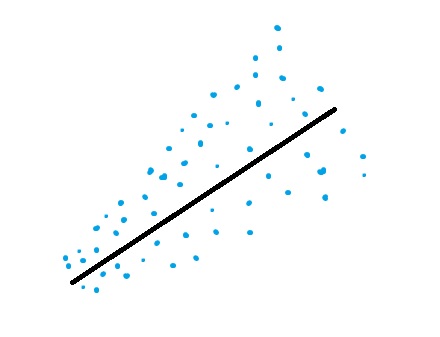Regression Analysis > Breusch-Pagan-Godfrey Test
You might find it helpful to read this article first: What is heteroscedasticity?
What is the Breusch-Pagan-Godfrey Test?

Running the Test
The test statistic for the Breusch-Pagan-Godfrey test is:
N * R2 (with k degrees of freedom)
Where:
- n = sample size
- R2 = R2(Coefficient of Determination) of the regression of squared residuals from the original regression.
- k = number of independent variables.
The test statistic approximately follows a chi-square distribution.
- The null hypothesis for this test is that the error variances are all equal.
- The alternate hypothesis is that the error variances are not equal. More specifically, as Y increases, the variances increase (or decrease).
A small chi-square value (along with an associated small p-value) indicates the null hypothesis is true (i.e. that the variances are all equal).
Note that the Breush-Pagan test measures how errors increase across the explanatory variable, Y. The test assumes the error variances are due to a linear function of one or more explanatory variables in the model. That means heteroskedasticity could still be present in your regression model, but those errors (if present) are not correlated with the Y-values.
If you suspect that a small subset of values is causing heteroskedasticity, you can run a modified Breusch-Pagan test on those values alone.
Caution: Some authors (including Bickel(1978) and Koenker(1981) have suggested the Breusch-Pagan-Godfrey test statistic may not be accurate for non-normal data.
References:
Bickel, P.J., 1978, Using residuals robustly I: Test for heteroscedasticity and nonlinearity, Annals of Statistics 6, 266-291.
Breusch, T.S. and A.R. Pagan, 1979, A simple test for heteroscedasticity and random coefficient variation, Econometrica 47, 1287- 1294.
Koenker, R., 1981, A note on studentizing a test for heteroscedasticity, Journal of Econometrics 17, 107-l 12.